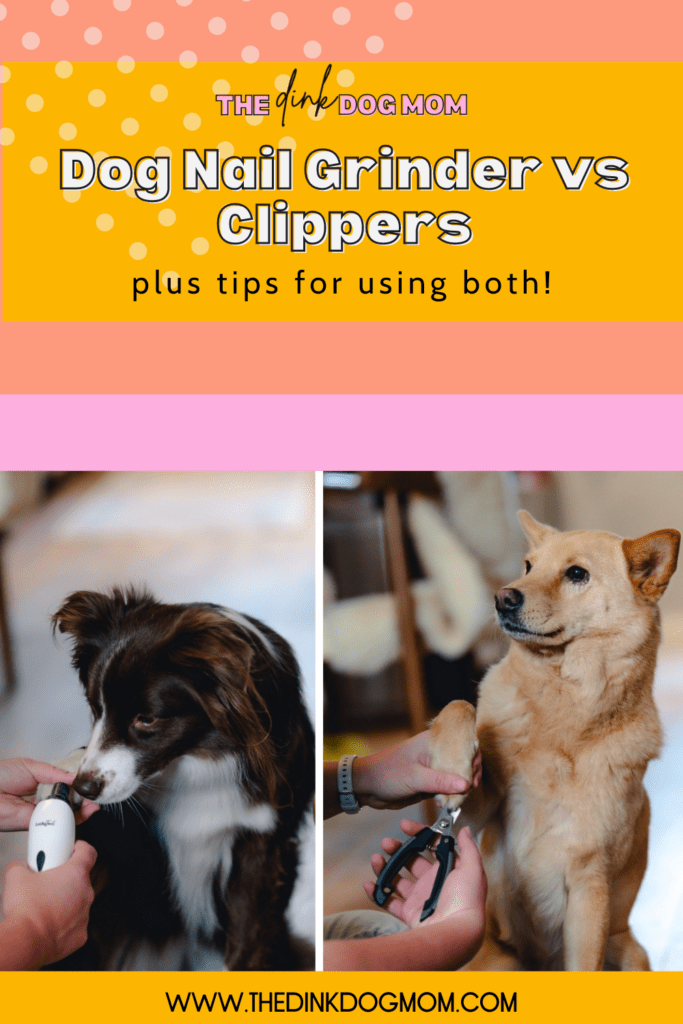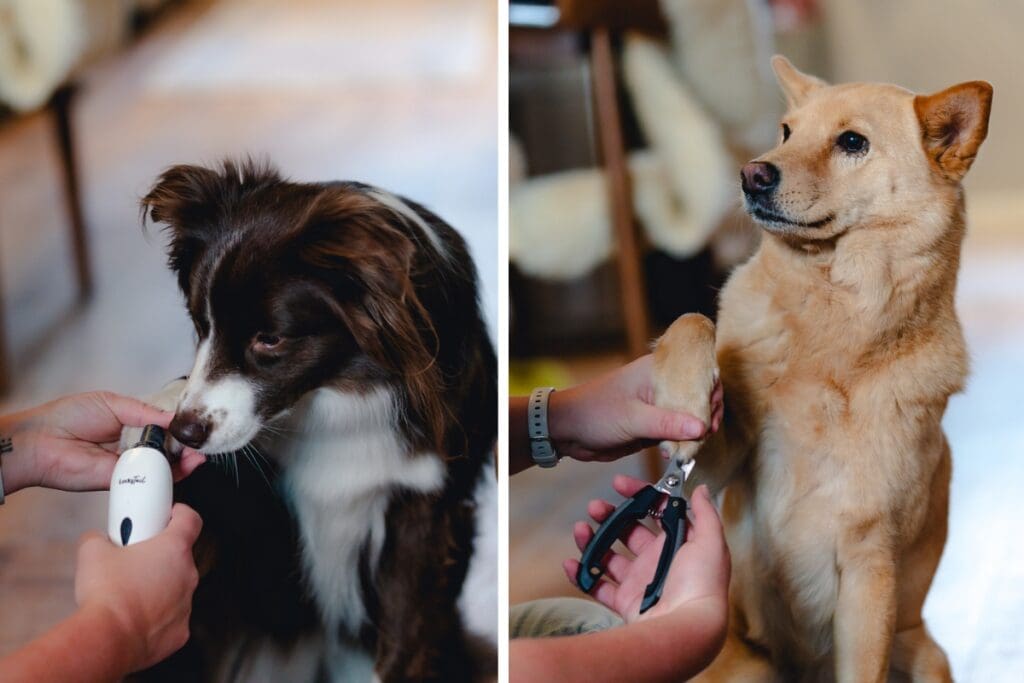Ever since I adopted my first dog Mia, I have always trimmed my dog’s nails. This is due mostly to lazinesss: I just don’t want to have to drive my dog to the vet or groomers every time they need a nail trim. Plus, I want this routine procedure to be as stress-free as possible, especially since it’s such an important part of my dogs’ physical health. And, if I’m being totally honest here, I just don’t really trust another person to do it.
Trimming your dog’s nails at home definitely has its perks, including saving you time and money, but it’s not always an easy task and many dog moms don’t feel comfortable doing it. However, having the right tools makes it significantly easier and less scary!
*Disclosure: This post contains affiliate links. This means that I may earn a small commission, at no additional cost to you, if you make a purchase. Thank you for supporting my blog! I only recommend products I use myself, and all opinions expressed here are my own. Read my full disclosure here.
Tools to Trim Your Dog’s Nails
Essentially there are two types of tools you can use to trim your dog’s nails:
- A dremmel or nail grinder
- Clippers (which come in two types, guillotine and scissor)
- Styptic powder (halts bleeding if you clip the quick, a soft cuticle that contains the blood vessel and nerves that run through your dog’s nail)
Both grinders and clippers are an important part of your tool kit when it comes to grooming your dog, because they each serve slightly different purposes. That said, if you can only select one or the other, read on to learn more about the pros and cons of a dog nail grinder vs clippers.
Dog Nail Grinder
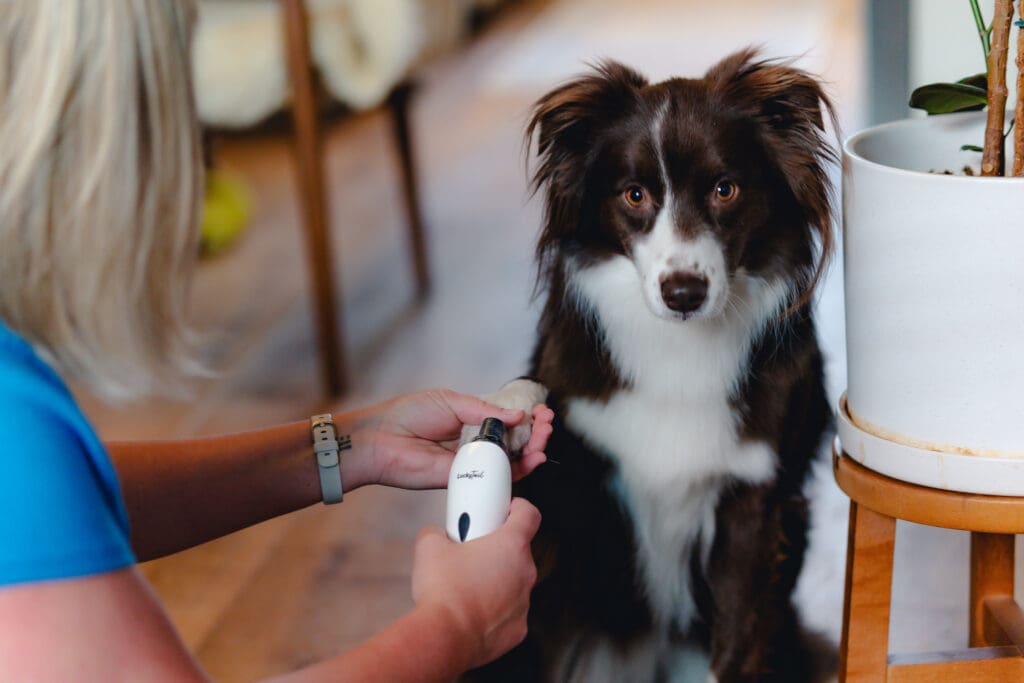
A dog nail grinder is a dremmel that you use to file your dog’s nails down. It’s generally considered easier and safer to use, as you don’t run the risk of clipping the quick like you do with dog nail clippers. On the flipside, it can be more challenging to desensitize your dog to the grinder due to noise, vibrations, and just the length of time it takes to file a nails.
Benefits of a nail grinder for dogs:
- Safer to use (less likely to clip the quick).
- No risk of splintering the nail or creating rough edges that can catch on things.
- Easier to “shape” the nail.
Cons of a nail grinder for dogs:
- Takes longer to use
- Dogs may not like the noise/vibrations
Dog Nail Clippers
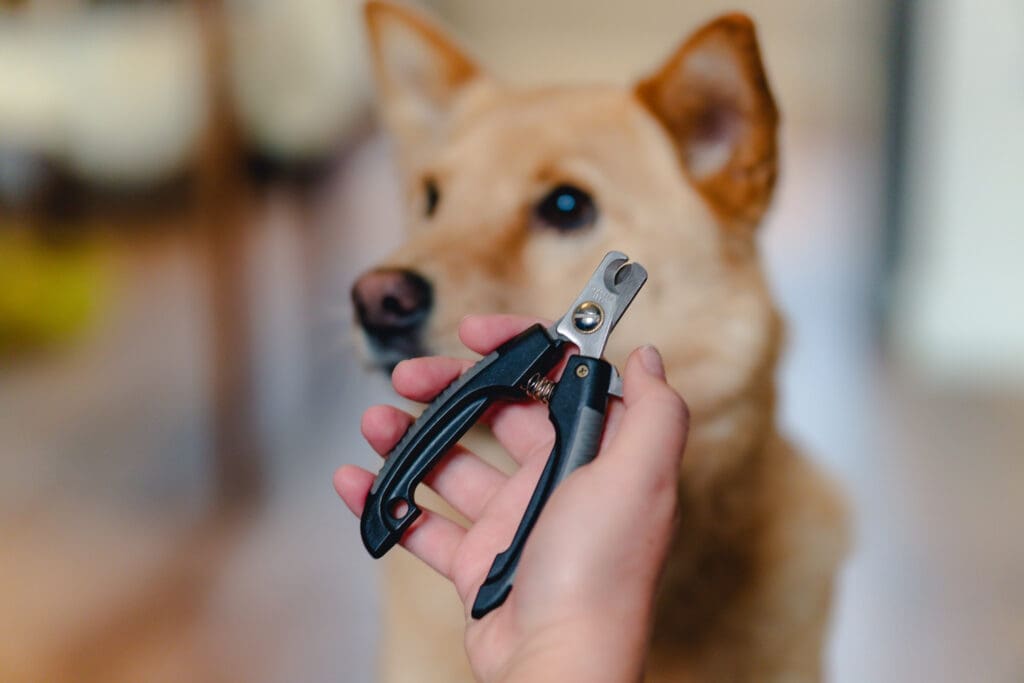

Dog nail clippers come in two styles: guillotine, which slices up-and-down (like a, well, guillotine), and scissor, which slices sideways (like, well, scissors). Clippers are quick and efficent to use, as long as you know what you are doing. It’s important to clip a nail underneath at a 45 degree angle, and it is really important not to cut the nail too short. Clipping the quick is very painful for your dog (think about what it feels like to trim a nail too short), and it causes a lot of bleeding.
Pros of nail clippers for dogs:
- Quick
- More efficient for long nails
Cons of nail clippers for dogs:
- Steeper learning curve to use
- Higher risk of clipping the quick
Nail Grinders for Dogs vs Nail Clippers for Dogs
I already mentioned that both nail grinders and nail clippers have a place in my toolkit. I like to use dog nail clippers (these are the ones I use) for a first pass, especially if I haven’t trimmed my dog’s nails in awhile or if my dogs are more restless. The clippers enable me to trim to the right length a lot quicker than a grinder, which is helpful if your dog doesn’t want to sit still for very long (some days be like that).
However, I also like to come in with the dog nail grinder to smooth over any rough edges and “fine-tune” the length. I am always ultra-conservative on how much nail I clip off, and the grinder is a great way to shave a little more without worrying so much about the quick. I also use the grinder for more frequent “maintenance” trims. Recently, I tried this nail grinder from LuckyTail, and I really love it. It works quickly, but the motor is a lot quieter than other nail grinders. It’s also ergonomic and easy to handle, AND it’s rechargable (yay for not running out of batteries right when you need it).
Another reason I like to keep both dog nail clippers and a nail grinder on hand is because sometimes, for whatever reason, my dogs will tolerate one much better than the other. Although most of the time they are fine with the grinder, especially the Luckytail, every now and then they just don’t want to tolerate it. On those days, having clippers to get the job done quickly and efficiently is key.
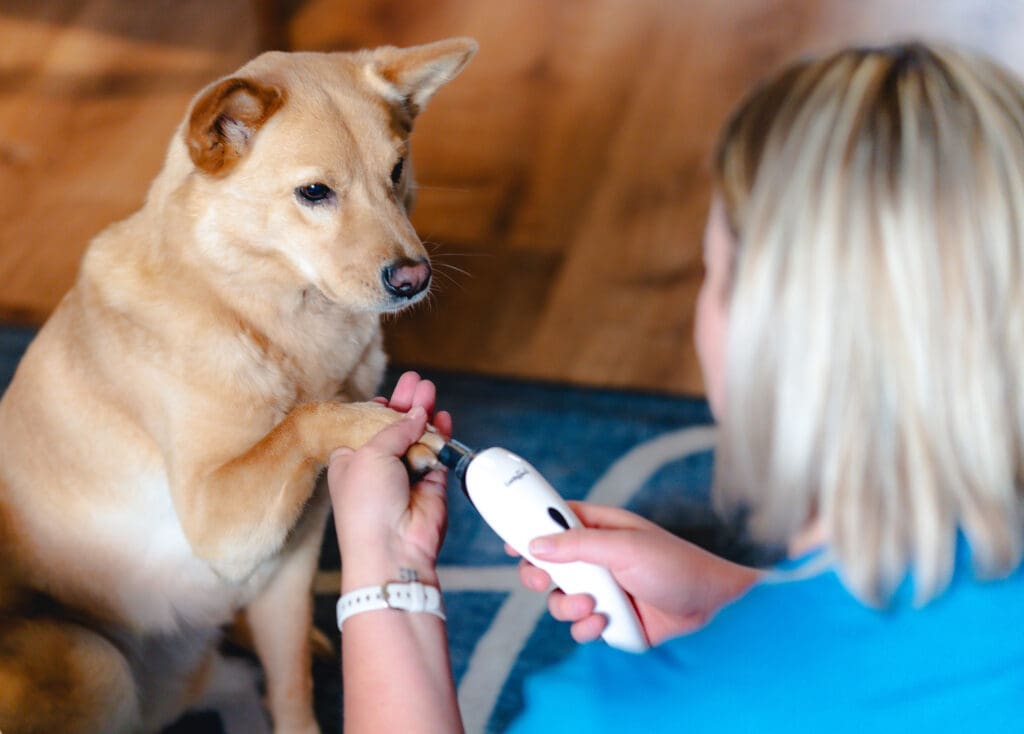

Tips for Trimming your Dog’s Nails
First and foremost, regardless of which tool you choose to trim your dog’s nails, spend time helping your dog grow comfortable with nail trims. This is a slow process, but so worth the investment. You can even start with something incredibly simple, like teaching your dog to shake, which builds confidence and consent around paw handling.
Once your dog is comfortable with nail trims, or at least tolerates them without signs of significant stress, it is important to continue reinforcing the procedure with your dog’s favorite treats. I like to reward each time I clip or dremmel a nail to make the process more enjoyable.
If you are using nail clippers, trim under the nail at a 45 degree angle from the floor (see the diagram below). If your dog’s nails are clear or white, you can usually see the quick as a little pink thing in the middle of the nail. This makes it easier to avoid cutting too close to the quick. However, if your dog has black nails, remember that the quick is usually just above the curve of the nail. Always err on the side of caution, as it’s better to leave your dog’s nails a little long than to cut them too short.
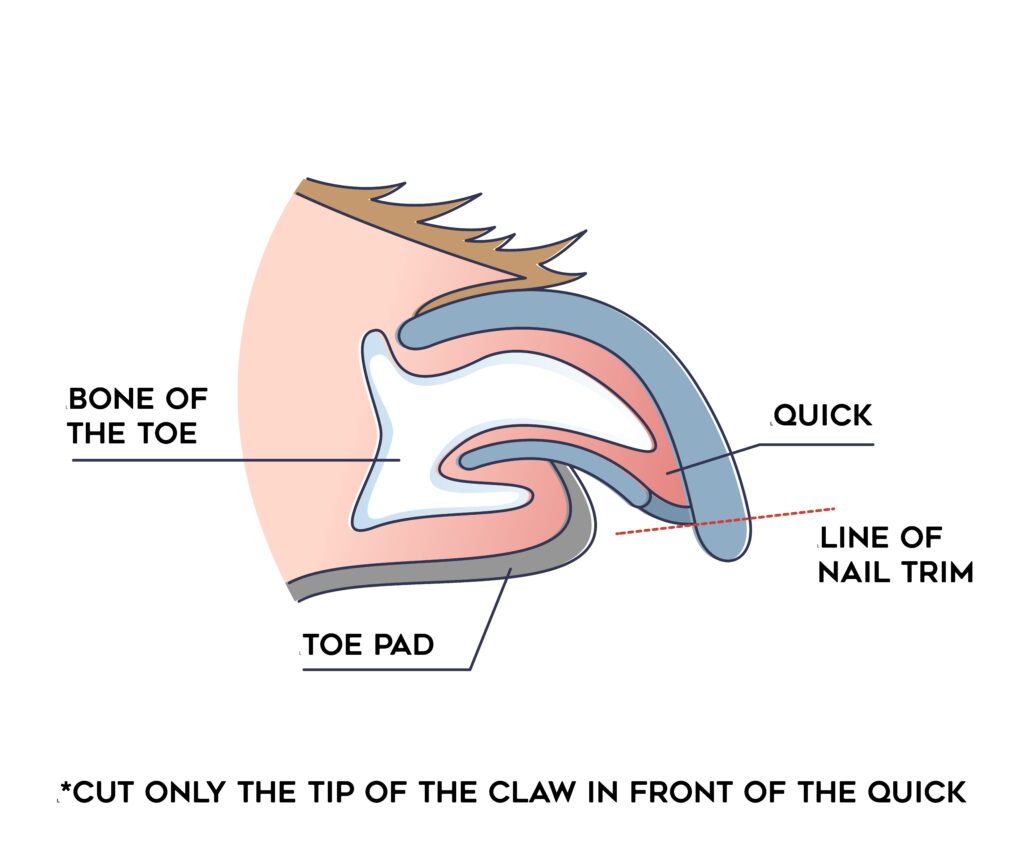

If you are using a dog nail grinder, dremmel under the nail and try to aim for the same 45 degree angle as you would with clippers. Keep in mind that the friction of a dremmel can cause heat build up, so don’t leave the dremmel on the nail for too long. It’s best to start under the nail and curve up and over the top of it in light, sweeping motions.
Lastly, keep nail trimming sessions short and positive. Reward frequently, and take as many breaks as needed. Remember, you don’t have to do all of the nails at one time!
